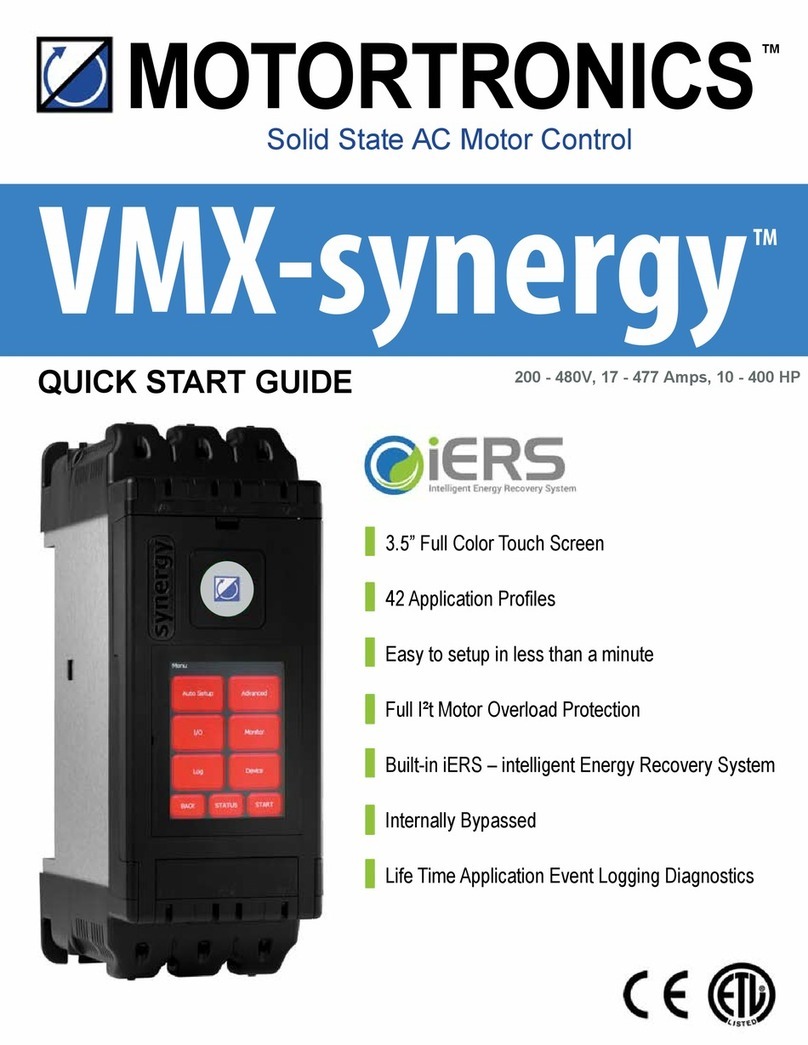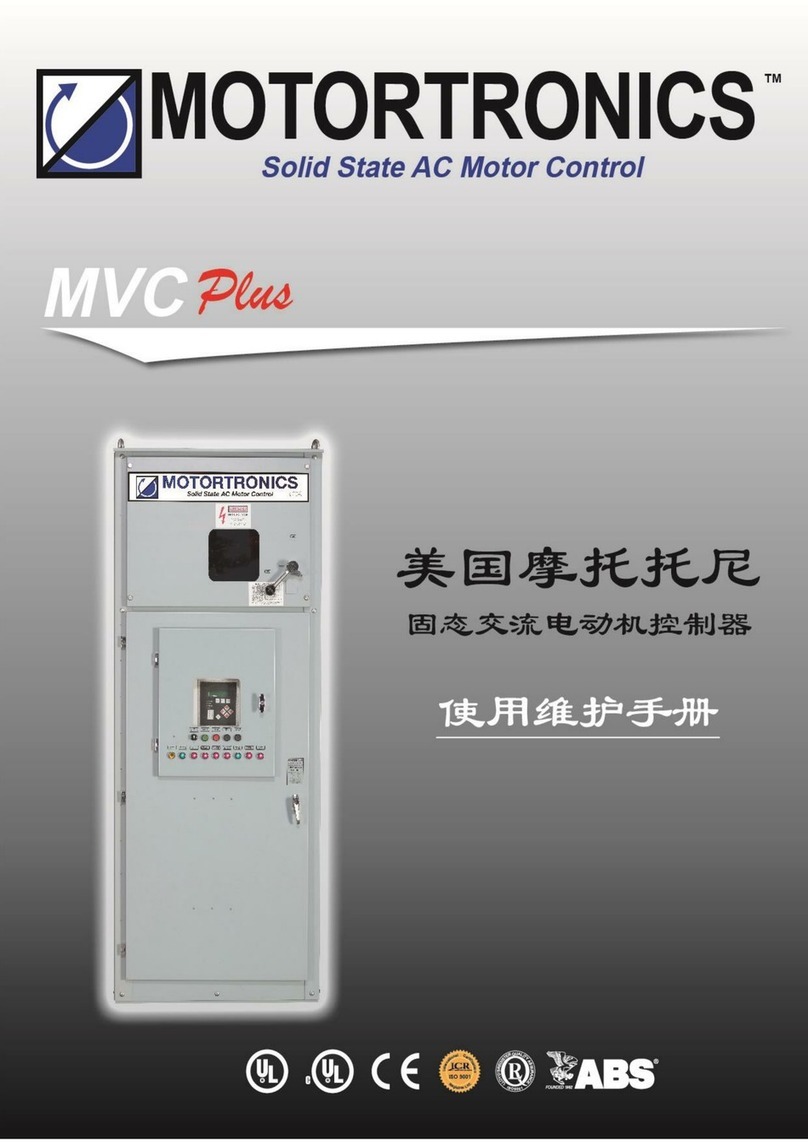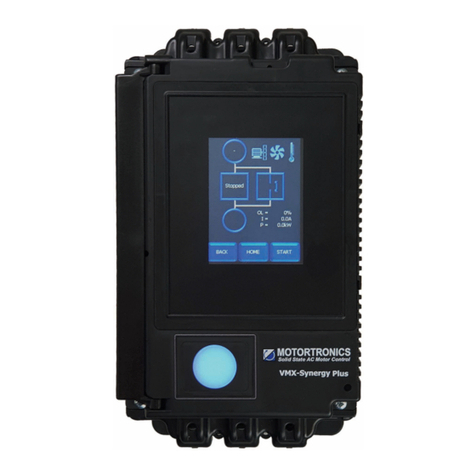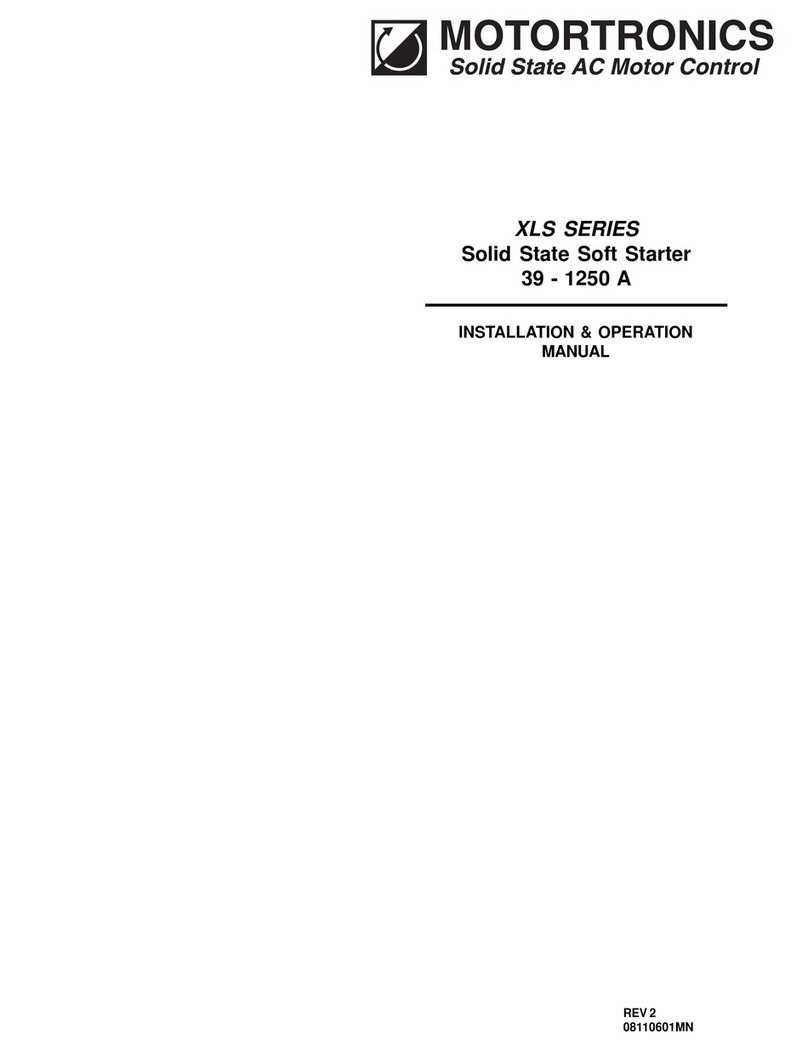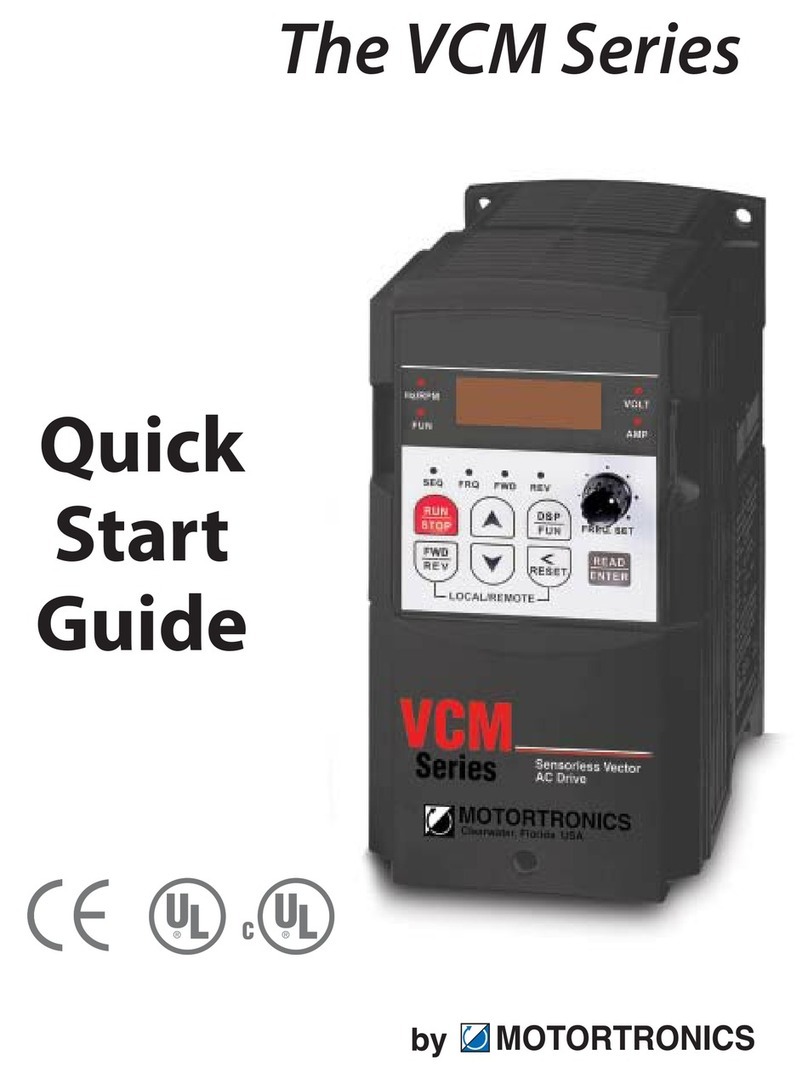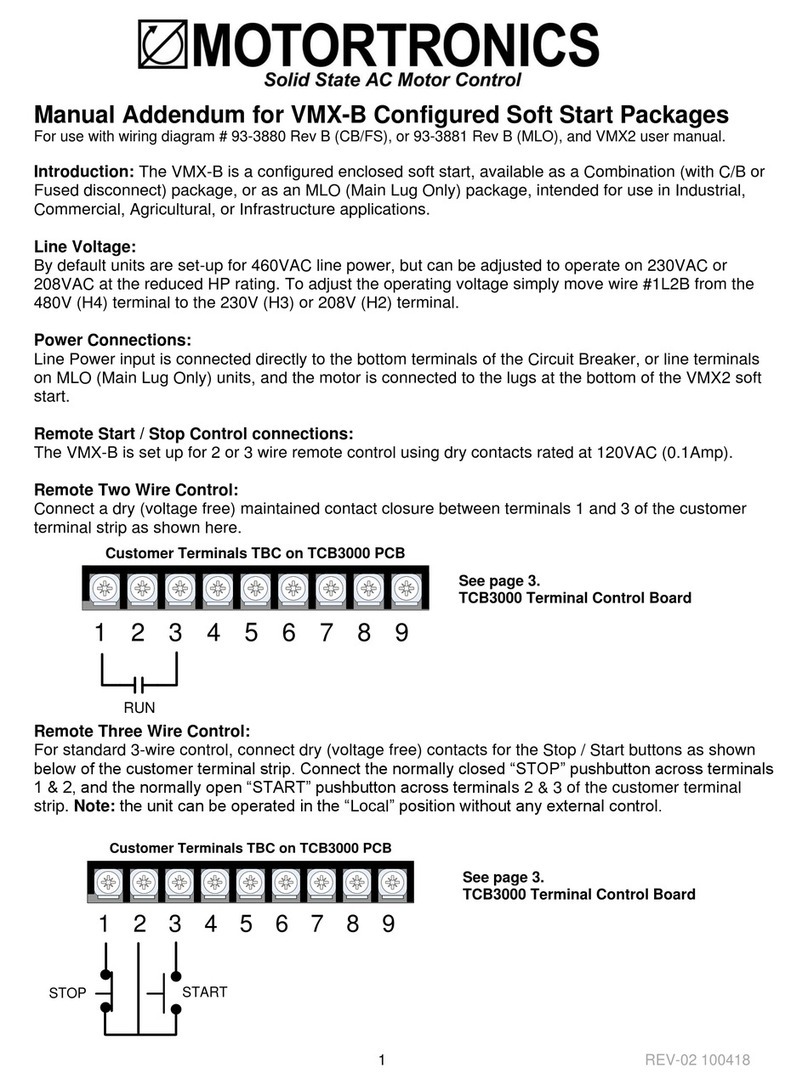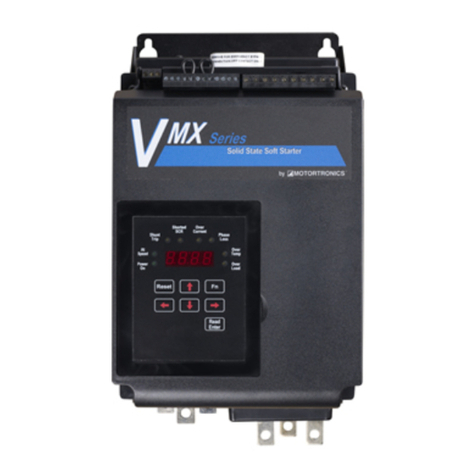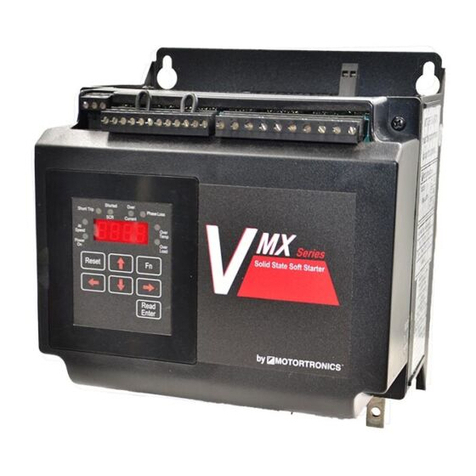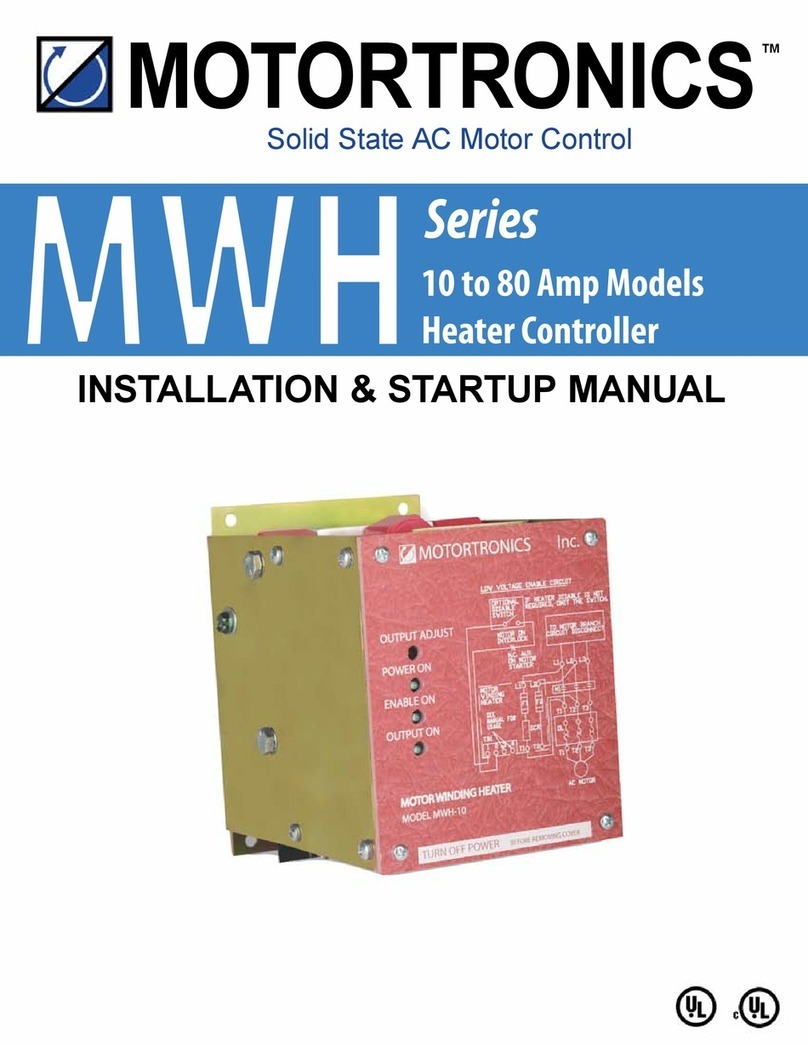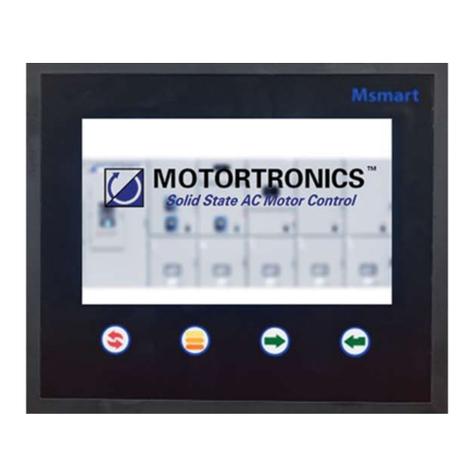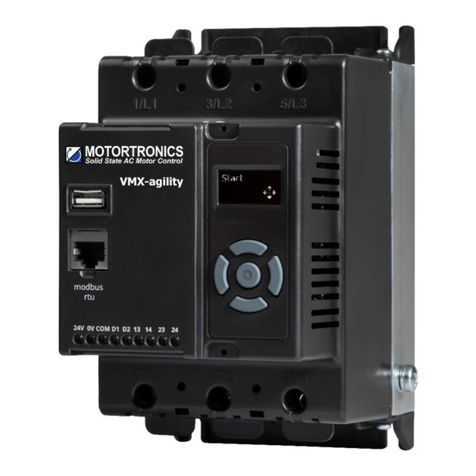VMX2Series Digital Solid State Soft Starter User Manual 4 | P a g e
1.2 Sizes and Ratings
The Motortronics VMX2 Series starters are current rated controllers.
Max. Amp ratings are for continuous duty and must not be exceeded.
Always check the motor nameplate FLA and Service Factor to ensure
proper sizing.
Each size has an adjustable current range of 50% to 100% of the Max
Amp rating. Table 1.2 shows the Current Ratings available.
1.2.1 Selecting for Service Factor Utilization
Many NEMA design motors include a design rating referred to
as Service Factor (SF) that may allow continuous operation
above the nameplate current rating. If using this Service
Factor, the VMX2 Series starter must be sized for the total
amps used. For proper selection of the VMX2 Series starter
when using SF continuously, multiply the nameplate FLA by
the stated Service Factor, or use stated Service Factor Amps
(SFA) if listed on the nameplate. The following excerpt is from
the NEMA MG-1 standards for AC Motors that describes the
issues concerning the use of Service Factor ratings.
"When an induction motor is operated at any service factor
greater than 1.0, it may have efficiency, power factor and
speed different than those at rated load. Locked rotor torque
and current and breakdown torque will remain the same. A
motor operating continuously at any service factor greater than
1.0 will have a reduced life expectancy compared to operating
at its nameplate horsepower."
When using this feature, simply program the VMX2 Series
Service Factor (F002) to the nameplate rating. (See section
5.6.1.) All other adjustments to the protection circuits are done
automatically within the VMX2 Series.
1.2.2 Selecting for Across the Line Bypass
If you need to be able to start the motor Across-the-Line when
the VMX2 Series electronics are out of service, the starter can
also be selected based upon the rating of the Bypass
Contactor. Some users may also elect to size their Bypass
Contactors per NEMA guidelines. When doing this, please
refer to the Product Selection Guide for details and notes, and
see Appendix 4 for special considerations regarding Overload
Protection.
1.2.3 The VMX2…-BP Series starters include the ability to connect
a dry contact directly to the Bypass Contactor coil control circuit.
These terminals are covered when shipped and should be used
ONLY when necessary for Emergency Bypass operation and with
an external Overload Relay. See Appendix 4 for additional
information.
No field wiring to these terminals is necessary if this feature is not
used.
